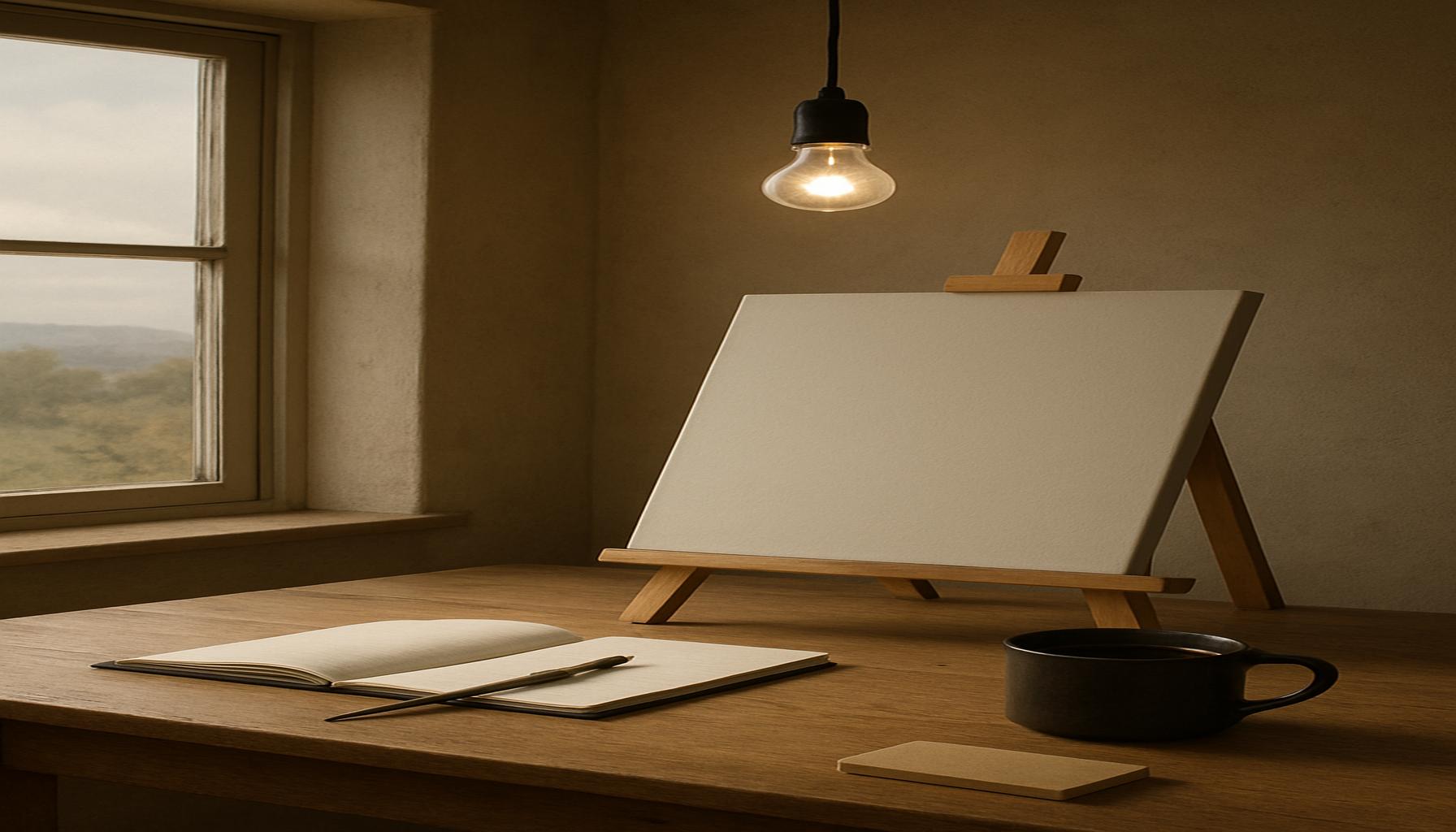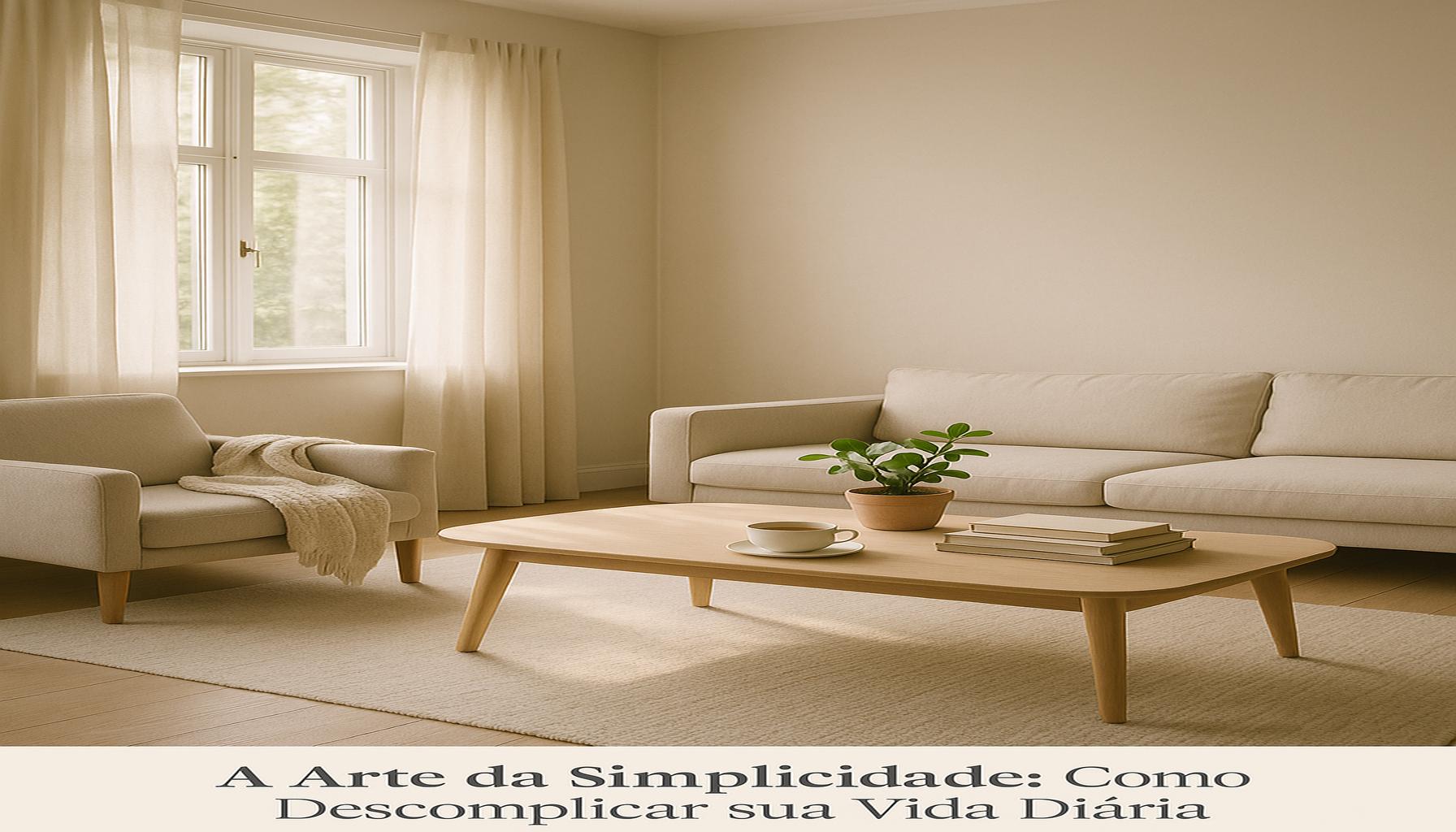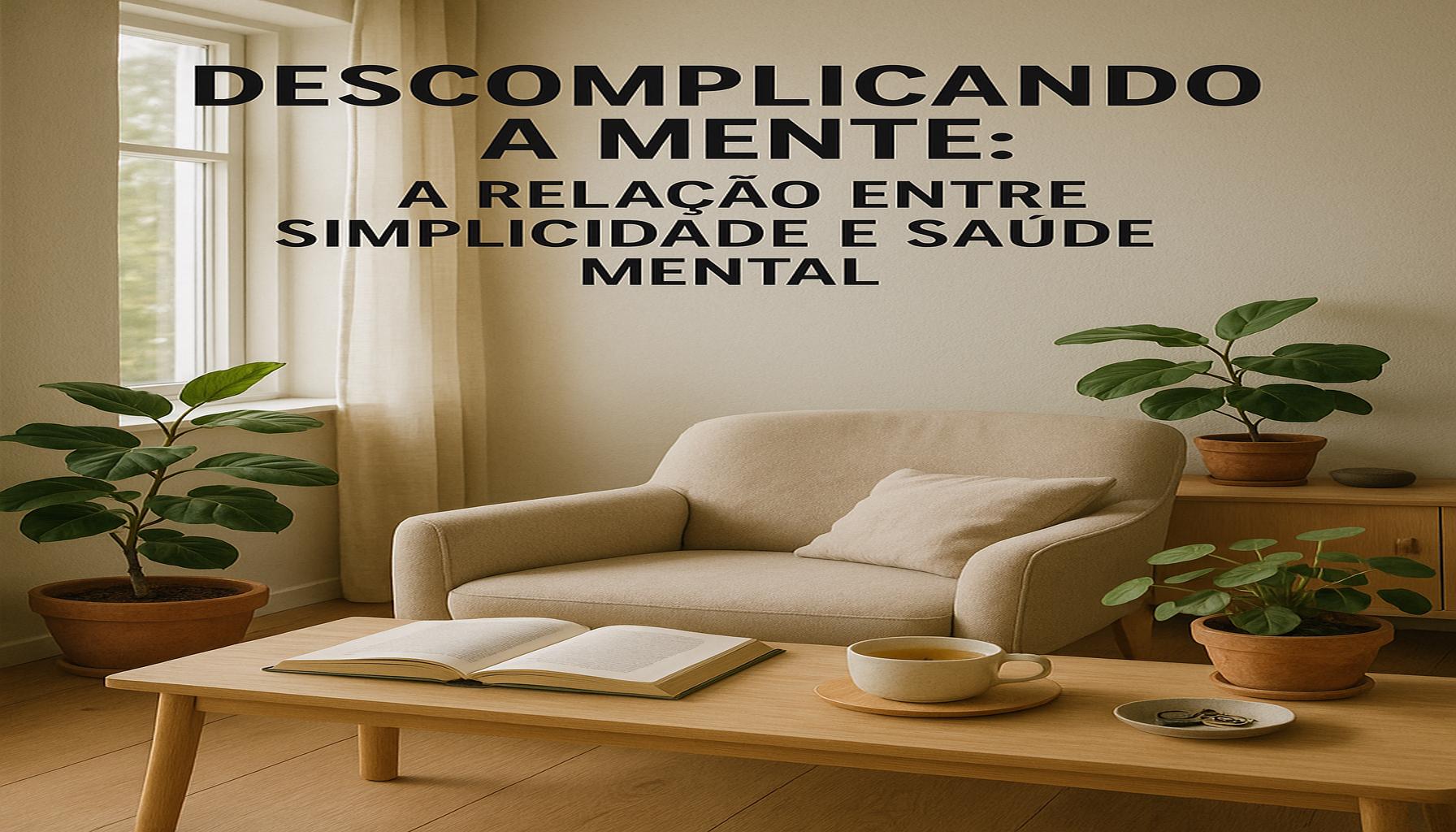Simplicity and Creativity: How Reducing Stimuli Can Enhance Personal Innovation

The Importance of Simplification in Fostering Creativity
In a world inundated with distractions, clutter, and noise, finding a way to foster creativity can feel like navigating a labyrinth. Research suggests that simplifying our environments may be the key to unlocking personal innovation. By reducing stimuli, we pave the way for our minds to focus, explore, and ultimately create. When our surroundings are simplified, we can engage more deeply in our thoughts and harness the creative potential within us.
The benefits of embracing simplicity in our lives and workspaces include:
- Enhanced Focus: Studies show that environments with fewer distractions allow for deeper concentration. For example, a 2019 study published in the Journal of Environmental Psychology revealed that cluttered spaces hinder cognitive processing, making it harder for individuals to concentrate on tasks.
- Improved Problem-Solving: A streamlined environment encourages clearer thinking. When unnecessary stimuli are stripped away, it becomes easier to analyze problems from different angles and develop innovative solutions. Consider how many tech startups implement open office layouts devoid of excessive decorations; this often fosters collaboration and creative brainstorming.
- Increased Productivity: Minimizing unnecessary elements can significantly boost overall output. Research from the American Psychological Association highlights that a cluttered environment can lead to increased stress levels, which may adversely affect productivity. By maintaining an organized workspace, individuals report not only a sense of calm but also the ability to focus on their tasks more effectively.
Innovative thinkers like Steve Jobs and Marie Kondo frequently advocate for decluttered spaces. Jobs famously designed Apple’s offices with an emphasis on simplicity and minimalism, believing that an uncluttered workspace allowed for greater creative output. Similarly, Kondo’s tidying philosophy centers on keeping only the items that “spark joy.” These perspectives accentuate the idea that mental clarity is closely tied to physical surroundings. Even artists such as Picasso thrived in environments that were deliberately stripped of distractions, which allowed raw creativity to flow unencumbered.
This exploration of creativity through simplification opens the door to various techniques that individuals can implement in their lives. From the popular practice of digital detoxing—limiting screen time spent on social media or other distracting apps—to the physical act of organizing one’s workspace, the options for fostering creativity are plentiful. Incorporating mindfulness practices, such as meditation or yoga, can also help in clearing the mental fog, further enhancing creative abilities.
As we delve deeper into the significance of clarity, it becomes apparent that a conscious effort to simplify our environments can lead to profound advancements in personal and professional innovation. For anyone seeking to foster creativity, nurturing a minimalist approach could be the catalyst needed to unlock new levels of inspiration.
DISCOVER MORE: Click here to uncover the benefits of minimalism
Unlocking Creativity Through Intentionally Simple Environments
As the pace of modern life accelerates, individuals often find themselves overwhelmed by the constant barrage of information and sensory input. The challenge lies in reclaiming our mental space in order to foster personal innovation. A conscious decision to implement simplicity as a framework for creativity can yield impressive results. By strategically minimizing distractions and stimuli, we effectively create the mental and physical space necessary for original thought and innovation.
The concept of “less is more” extends beyond mere aesthetics; it serves as a guiding principle for enhancing cognitive flexibility and creative problem-solving. Research has revealed various strategies for achieving simplicity in our environments, each linked to improved creativity:
- Meditation and Mindfulness: Engaging in practices that promote mindfulness, such as meditation, has been shown to enhance cognitive processes. A study published in Neuropsychologia indicated that regular mindfulness practitioners demonstrate increased attentional control and creative thinking.
- Decluttering Spaces: The act of removing unnecessary items from our surroundings can significantly impact our cognition. A clutter-free environment has been linked to lower stress levels and improved concentration, making way for innovative ideas to flourish.
- Digital Minimalism: Limiting the time spent on screens can diminish cognitive overload. Research from Princeton University suggests that excessive digital engagement can fragment attention spans, ultimately stifling creativity. By adopting digital minimalism, individuals can reclaim valuable mental resources.
Prominent figures in the world of creativity have long recognized the importance of maintaining a clear environment. For instance, renowned architect Frank Lloyd Wright utilized open concepts in his designs, allowing natural light to flow through spaces and providing an unobstructed canvas for inspiration. Similarly, celebrated author Haruki Murakami often emphasizes a simple, distraction-free writing process that enables him to tap into his creative reservoir more effectively.
Implementing simplicity in daily life does not require radical changes; rather, it can begin with small, incremental steps. For instance, dedicating a few minutes each day to reorganize a workspace or intentionally disconnecting from technology can be powerful catalysts for creative thought. These practices not only declutter the environment but also signal to the mind that it is time to shift focus towards innovation.
In addition to physical clutter, emotional and mental noise can hinder creativity as well. Taking regular breaks, practicing relaxation techniques, and engaging in solitary activities can help clear the mental fog, allowing innovative ideas to surface. By adopting these practices, individuals can embark on a journey toward unlocking their creative potential through simplification.
Simplicity and Creativity: Unleashing Innovation Through Minimalism
The principle of simplicity serves as a foundation for personal innovation, encouraging individuals to cut through the noise of modern life. When external stimuli are minimized, the brain can focus on the essential elements that foster creativity. This concept aligns closely with various cognitive theories suggesting that cognitive overload can hinder innovative thinking. Recognizing this phenomenon can lead to transformative changes in how we approach our daily tasks and creative projects.One of the most compelling strategies for enhancing innovation is the practice of mindfulness. By engaging in mindfulness exercises, individuals can train their minds to concentrate better, ultimately helping them discern which ideas or projects are worth pursuing. Mindfulness not only reduces distractions but also cultivates a resilient mental state conducive to creativity. Alongside mindfulness, environmental optimization plays a crucial role. Creating a workspace that reflects a minimalist aesthetic can significantly enhance focus and productivity. For example, removing unnecessary clutter allows individuals to channel their thoughts more effectively, leading to novel ideas and solutions. A simple, organized workspace promotes a clear mind, ready to tackle complex problems with innovative approaches.Moreover, simplifying decision-making processes can be immensely beneficial. By limiting choices, we reduce the energy spent on unimportant decisions, thereby conserving cognitive resources for more significant challenges. This aligns with the psychology of decision fatigue, which suggests that too many choices can dilute one’s ability to make sound decisions. Streamlining options can enhance creativity by encouraging people to explore deeper and more meaningful avenues of inquiry.In essence, embracing simplicity is not merely about reducing clutter but serves as a gateway to enhancing personal innovation. The act of simplifying our environments, routines, and thought processes undoubtedly paves the way for profound creative breakthroughs. To learn more about how these principles can be implemented in your life, consider exploring mindfulness techniques and decluttering strategies that have been proven to stimulate the creative mind.
DISCOVER MORE: Click here for insights on minimalist organization
Fostering Innovation Through Structured Simplicity
To cultivate an environment that thrives on creativity and innovation, it is essential to embrace a structured form of simplicity. This approach aligns with the notion that too many options or stimuli can lead to decision fatigue—where individuals struggle to choose or create due to overwhelming choices. Studies show that fostering environments where simplicity is prioritized not only encourages unique ideas but also promotes a culture of innovation.
One effective method in achieving structured simplicity is the practice of time blocking. By dividing the day into dedicated segments for specific tasks, individuals can focus their mental energy on one task at a time. This technique has been championed by productivity experts such as Cal Newport, who stresses its advantages for enhancing deep work. When distractions are limited, the brain can concentrate and delve deeper into creative processes, generating innovative solutions that might otherwise remain dormant in a chaotic environment.
Furthermore, collaborative simplicity can amplify personal innovation. In team settings, embracing simplicity means distilling ideas to their essence during brainstorming sessions. Techniques such as mind mapping or using a single-page format for project outlines can streamline discussions, encouraging participants to focus on core concepts rather than getting lost in extraneous details. A study published in the Journal of Organizational Behavior found that teams that foster a culture of simplicity are 30% more effective in generating innovative solutions compared to those with cluttered communication structures.
Additionally, the role of nature in enhancing creativity cannot be overlooked. Numerous studies have demonstrated that exposure to natural landscapes reduces mental fatigue and promotes clearer thinking. For instance, findings from the University of Utah’s Attention Restoration Theory suggest that spending time outdoors helps replenish cognitive resources depleted by constant stimuli. Incorporating nature into one’s environment, whether through plants in the workspace or taking breaks outside, aligns with the tenet of simplicity, creating a serene backdrop for innovation to thrive.
Another intriguing aspect of structured simplicity is the concept of constraint-based creativity. This idea posits that placing limitations on resources can paradoxically enhance creative output. For example, when artists or writers limit their tools or time, they often produce more inventive work. A noteworthy example is the “30-day challenge” concept, where participants engage in a specific creative activity for 30 consecutive days with minimal resources. This method has led to unique artistic expressions arising from the very constraints intended to limit them.
Ultimately, merging simplicity with structured approaches creates a dynamic landscape for personal and collective innovation. By implementing time management strategies, fostering collaborative environments based on essential ideas, embracing nature, and understanding the value of constraints, individuals can transform their ability to innovate. The intersection between simplicity and creativity holds vast possibilities, encouraging a journey where innovative thoughts can flourish amid the noise of everyday life.
DIVE DEEPER: Click here to gain insight
Conclusion: The Power of Simplicity in Unlocking Innovation
In a world increasingly saturated with information and stimuli, the quest for creativity and innovation often feels daunting. However, the convergence of simplicity and structured approaches offers a refreshing perspective, revealing a pathway to enhanced personal innovation. By prioritizing simplicity through techniques like time blocking, cultivating collaborative simplicity, and drawing inspiration from nature, individuals can create conducive environments for innovative thought and expression.
The insights gained from understanding constraint-based creativity provide further evidence of how limitations can paradoxically fuel our creative potential. As we recognize that a less cluttered mind fosters clearer ideas, we can grasp the importance of intentionally curating our environments—both physical and mental. Practices that intentionally reduce distractions not only help us focus but also awaken ideas that might otherwise remain concealed beneath the noise of modern life.
Ultimately, embracing simplicity is not merely a strategy for increased productivity, but an essential catalyst for genuine creativity. As individuals and organizations navigate the complexities of our digital age, the deliberate pursuit of simplicity offers a powerful counterbalance, unlocking new realms of innovation. By exploring these principles further and implementing them into our daily lives, we can empower our creative capacities and shape a brighter, more innovative future.


